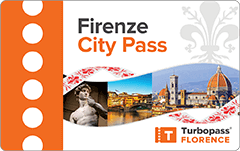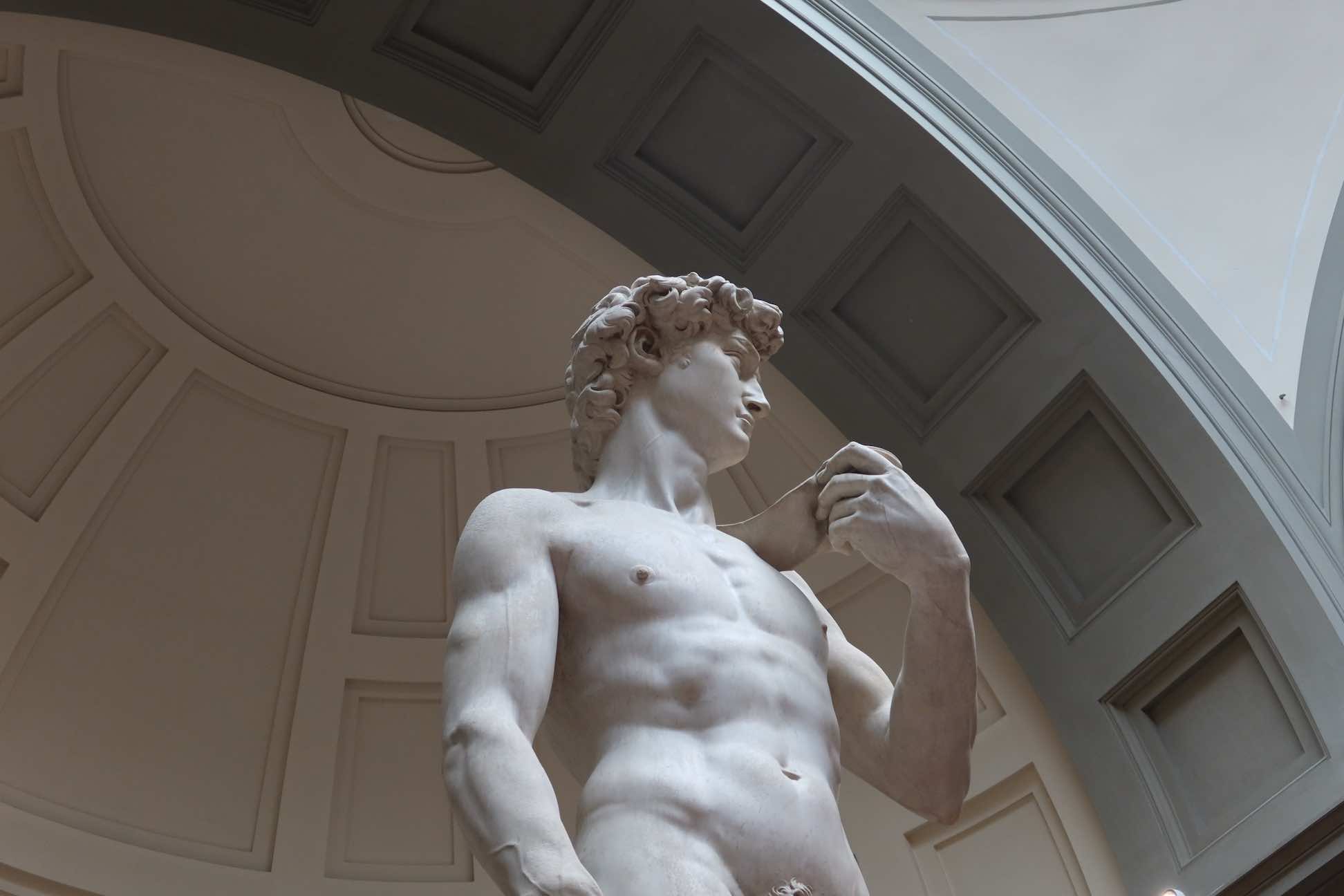- Sign up & get a FREE ebook Subscribe Today!
- Florencewise Home Page
- What to do in florence
- palazzo vecchio
Visiting the Fascinating Palazzo Vecchio in Florence
You can't throw a bistecca in Florence without hitting at least three spectacular palaces.
Out of all these places, what makes Palazzo Vecchio so interesting?
Everything you need to know about visiting Palazzo Vecchio
Thousands of visitors in Florence visit Palazzo Vecchio every year.
Many visit this palace turned museum because they appreciate its artistic and historical value.
Palazzo Vecchio is located at Piazza della Signoria, one of Florence's main squares and its tower stands at 311 ft/95 m, making it the tallest of the city.
The palace is notorious due to its appearance in Inferno, the 2013 bestseller by Dan Brown, and its 2016 movie adaptation.
But there's so much more to Palazzo Vecchio!
On this page we'll be talking about:
- The history of Palazzo Vecchio
- What Palazzo Vecchio is today
- Some of the interesting things to see when you visit Palazzo Vecchio
- Climbing the Torre di Arnolfo
- The best way to visit Palazzo Vecchio
- Practical information for visiting Palazzo Vecchio
A brief history of Palazzo Vecchio
When Julius Caesar built the colony of Florentina in 59 BCE, he erected the Roman Theater of Florentia shortly afterwards, right where Palazzo Vecchio would be built centuries later.
In the medieval period, this part of the city had become residential and was mostly occupied by Ghibelinne families, who opposed the power of the Papacy in worldly matters.
In the thirteenth century, the Ghibelines in Florence lost a big battle to their opponents, the Guelphs.
Their houses were destroyed, and it was decided that this would be the spot to erect a palace for the government that would demonstrate the importance of the Florence Republic.
But not all traces of history had been destroyed.
In the 19th century, part of the cavea (the seats of the Roman theater) revealed itself underneath the palazzo!
You can see the archaeological site of the theater in the palace's basement.
Build and Expansion of Palazzo Vecchio
Arnolfo di Cambio became the architect of this new palazzo.
The Tuscan native had previously been working on the Duomo and Basilica di Santa Croce in Florence.
He built the new cube-shaped palace from rusticated stone, with two rows of Gothic windows.
Arnolfo di Cambio also designed the first part of the tower, which was finished later.
The palazzo was originally called Palazzo della Signoria after the government (signoria) that it housed, which is also how the Piazza della Signoria got its name.
Of course, this is only the beginning of the palace's long history.
Cosimo I de Medici's Influence
In 1540, future Grand Duke Cosimo I de Medici moved his official seat to (then) Palazzo della Signoria to cement the Medici power in Florence.
Cosimo I renovated most of the residence in true Italian Renaissance style.
His main contribution was commissioning Giorgio Vasari to build a passageway between Palazzo Vecchio and Palazzo Pitti.
The Vasari Corridor passes through the Uffizi Gallery and over the Ponte Vecchio.
Palazzo Vecchio gained its new name (which translates to 'Old Palace') when Cosimo I de Medici moved his primary residence again to Palazzo Pitti in 1549.
City Council and Parliament for the Kingdom of Italy
Palazzo Vecchio has played a role in the region's civil power for over seven centuries.
It became the town hall in 1865.
After a brief spell in Palazzo Medici, the Florence City Council returned to Palazzo Vecchio in 1993.
The Palazzo even was the Chamber of Deputies for the new Kingdom of Italy from 1865 to 1871!
What is Palazzo Vecchio today?
Palazzo Vecchio opened as a museum in 1960.
However, since 1872, Palazzo Vecchio has also been the Mayor of Florence's official seat.
The City Council still uses some rooms, like the Salone del Dugento, but it is mostly a museum.
When you visit Palazzo Vecchio, you'll notice an ornate marble adornment above the entrance dating from 1528.
It is flanked by two lions (known as Cortile della Dogana) with the inscription Rex Regum et Dominus Dominantium.
This translates to, "King of Kings and Lord of Lords."
 The Latin text under the blue panel with gold stars is not huge but its meaning is hugely important to the city of Florence
The Latin text under the blue panel with gold stars is not huge but its meaning is hugely important to the city of FlorenceThere are also nine coats of arms painted along the crenellated parapet.
First painted in 1343 and refreshed in 1792, they represent the Florentine Republic.
Want to learn more about Florence's history and artistic masterpieces?
Join this in-depth walking tour where you'll get to see another side of the city, as well as going inside the Duomo and Accademia.
Piazza della Signoria
You can't discuss the palace without mentioning Piazza della Signoria!
One of the most iconic statues in the square is the replica of Michelangelo's David.
You can find the original statue in the Galleria dell'Accademia.
 When the original David was moved to the Accademia to keep it safe, a replica was created to replace it in the piazza
When the original David was moved to the Accademia to keep it safe, a replica was created to replace it in the piazzaThere is also an equestrian statue of Cosimo I de Medici, unveiled in 1594.
The Loggia dei Lanzi (or Loggia della Signoria) is another unmissable part of Piazza della Signoria.
It is an open-air gallery with wide arches displaying amazing works like Perseus by Benvenuto Cellini.
No matter what season you visit Florence, here are 4 essential things we recommend never leaving home without:
Disclosure: If you make a purchase through a link on this page, I may receive a small commission - at no extra cost to you. Thank you for supporting my site!
What there is to see when you visit Palazzo Vecchio
Palazzo Vecchio has six floors with magnificently decorated staterooms, halls, apartments, and exhibitions.
The Monumental Quarters, rooms used by the Medici family, dominate most of the palace.
The First Courtyard
Architect Michelozzo designed the first courtyard you'll visit at Palazzo Vecchio in 1453.
The porphyry fountain by Battista del Tadda sits in the center.
It looks magical in the midday light!
Vasari painted highly detailed frescoes of cities ruled by the Habsburg monarchy in 1565 in this courtyard.
The massive pillars surrounding the courtyard have the most intricate carvings.
 The details on the columns and in the courtyard are often missed as people head inside, but they're absolutely worth taking time to see!
The details on the columns and in the courtyard are often missed as people head inside, but they're absolutely worth taking time to see!Salone dei Cinquecento
Located on the first floor, the Salone dei Cinquecento might be the most spectacular and richly decorated hall in Italy, let alone Florence!
Translating to 'Hall of the Five Hundred', the Salone dei Cinquecento measures 177 ft/54 m long, 75 ft/23 m wide, and 59 ft/18 m high.
Simone del Pollaiuolo and Francesco Domenico built the hall in 1494 under the orders of Friar Savonarola who temporarily overthrew the aristocracy to rule Florence.
He created a great council of Florentines to make decisions for the city, and even though it had thousands of members, the Hall of the Five Hundred was named for an idealistic version of the council with 500 members.
Both the iconic artists Michelangelo and Leonardo da Vinci worked on frescoes for the hall, battle scenes that celebrated the Florentine Republic's victories.
Unfortunately neither finished their work.
Michelangelo never got further than sketches before he left for Rome and da Vinci was experimenting with a technique known as encaustic, which uses colored hot wax.
This was not successful and actually ruined the work he had done previously.
Da Vinci never came back to it and around 60 years later, after the Medici family took back control of the city, Cosimo I de Medici radically updated the hall with the help of Giorgio Vasari.
Vasari is responsible for many of the incredible battle scene frescoes, and also designed an ingenious way of raising the ceiling by 7 meters for a more impressive space.
In this room you'll also find the Labors of Hercules sculptures by Vincenzo de Rossi, sculptures of Pope Leo X and Clement VII by Bandinelli and many other works of art.
Study of Francesco I
Francesco I de Medici commissioned Vasari to build a private office in 1570.
It's a small, barrel-shaped room on the first floor with thirty-four paintings from ceiling to floor.
The Duke experimented with alchemy and stored his collection of unusual objects such as stones, weapons, and animal horns here.
Apartments of the Elements
On the second floor, the Apartments of the Elements were Cosimo I's private quarters.
This residence consists of five rooms (one named the 'Room of the Elements', decorated with allegories relating to air, water, fire, and earth) and two loggias.
 I love that these rooms were for the private family - can you imagine being surrounded by this level of artistry every day?
I love that these rooms were for the private family - can you imagine being surrounded by this level of artistry every day?All rooms are decorated with frescoes depicting mythological Greek figures.
Eleonora's Quarters
Cosimo I de Medici's wife was Eleanor of Toledo, a Spanish noblewoman.
Eleonora's apartments are also on the second floor and include a dining room and chapel.
Her Sala Verde (green room) marks the beginning of the Vasari Corridor.
Hall of Lilies
Known as Sala dei Gigli in Italian, the Hall of Lilies is one of the few rooms in Palazzo Vecchio that kept its original 15th-century design.
It's the only room in their apartments that the Medici family did not redecorate!
It is completely covered in a lily motif, an ancient symbol of Florence.
Loeser Collection
Charles Loeser was an American art historian who settled in Florence in 1890.
When he died in 1928, he had collected over one thousand works of art, including Old Masters and Tuscan School sculptures.
He left thirty works to the municipality of Florence, and most of the Loeser Collection is on display on the mezzanine level.
Other Rooms and Apartments
There are a couple of other fantastic rooms to check out in Palazzo Vecchio.
One is the Hall of Geographical Maps.
You can see fifty-three world maps dating to the 16th century.
Another key exhibit in the Map Room is the Mappa Mundi, once the largest globe in the world.
Another is Sala dell'Udienza (Hall of Justice), the Audience Chamber.
Meetings of the Priori, who controlled the arts and trades in Florence until the 16th century, would meet here.
It has some of the oldest art in the palace!
Climbing the Torre di Arnolfo
As the tallest tower in the city, Arnolfo's Tower in Palazzo Vecchio is an unbeatable vantage point for views of Florence.
It boasts three bells: the Martinella, which called the Florentines to meet, the midday bell, and the tolling bell.
You can only visit the tower by pre-booking a time slot online.
It almost always sells out, even before the museum, as a maximum of 30 people can book each time slot.
When you arrive, head to the Arnolfo Tower ticket desk, not the main ticket office, to start your climb.
After climbing 223 steps to the top, you will be rewarded with unobstructed views of the Duomo and the Tuscan hills.
Look south across the Arno River for the lush Boboli Gardens.
If it rains, the tower will close.
You won't get a refund or a different time slot.
However, the ticket includes access to the Walkway of Ronda which is accessible when it rains.
Check out our top tips for making the most of your time in Florence:
The best way to visit Palazzo Vecchio
After entering though the main door on Piazza della Signoria or the side door on Via dei Gondi, the first courtyard is free and open to everyone.
During the peak season, the best time to visit is early morning.
Fewer crowds mean it's easier to move around the palace and see the artwork up close.
 Timing your visit for when it is quieter means you can take your time and see everything, such as these original wooden structural details
Timing your visit for when it is quieter means you can take your time and see everything, such as these original wooden structural detailsThe late afternoon is also a good time to visit, especially if you have not booked ahead.
Be mindful that the ticket office closes one hour before closing time.
Palazzo Vecchio is super easy to explore without a guide.
The information cards have Italian and English translations and you can pick up a map in your preferred language at the ticket office.
However, there are not many of these information cards at Palazzo Vecchio.
Plus, some parts of the palazzo (the Secret Staircase and Passages, for example) are closed to the general public.
Guided tours are the only way to explore these hidden parts of the palace and learn about its history first-hand.
Visitors typically spend two to three hours in Palazzo Vecchio, but add on around forty-five minutes if you also want to climb the tower.
Practical information for visiting Palazzo Vecchio
Palazzo Vecchio and the Arnolfo Tower are open every day.
Opening times for the museum (except Thursday) are 9:00 AM - 7:00 PM. Opening times for the tower are 9:00 AM - 5:00 PM.
On Thursday the museum and the tower close at 2:00 PM.
 Palazzo Vecchio is one of Florence's most important sights but despite offering stunning views like this, it can often be overlooked. Don't make that mistake!
Palazzo Vecchio is one of Florence's most important sights but despite offering stunning views like this, it can often be overlooked. Don't make that mistake!Palazzo Vecchio often hosts special exhibitions which usually last for three or four months, and when these are on, the regular entrance ticket price tends to be higher.
Sitting at the heart of the historic center, Palazzo Vecchio is easy to reach from pretty much anywhere in Florence.
It's about 20 minutes walk from the main train station, you can take one of the many buses or jump in a taxi if you prefer.
Florencewise's Top Travel Resources
Ready to book your trip to Florence? Take a look at these helpful links to companies we use and trust:
- Keep your travel spending simple with the Wise card, which removes all the worry about exchange rates and high transaction fees all over the world
- Search for and book your perfect accommodation
- Our complete guide to what to pack for Florence
- The number one travel accessory, a multi-point travel adapter and voltage converter
- Browse a huge range of tours in Florence and beyond
- Experience unique tours and special access to Florence's most popular sights
- Protect yourself with comprehensive travel insurance
Within this post there are some affiliate links for products and services. For more details about our affiliate policy click here.
Receive the latest Florence news, travel tips, insights and more!
Simply sign-up today for our free newsletter:
We are committed to respecting your data. Click for our Privacy Policy.
Comments? Questions? Suggestions?
Please come over to the private Facebook group and join in the conversation.
You will often find me there, happy to answer your questions / comments!
You will also meet other Florence lovers and experts, too.
What are you waiting for?
























